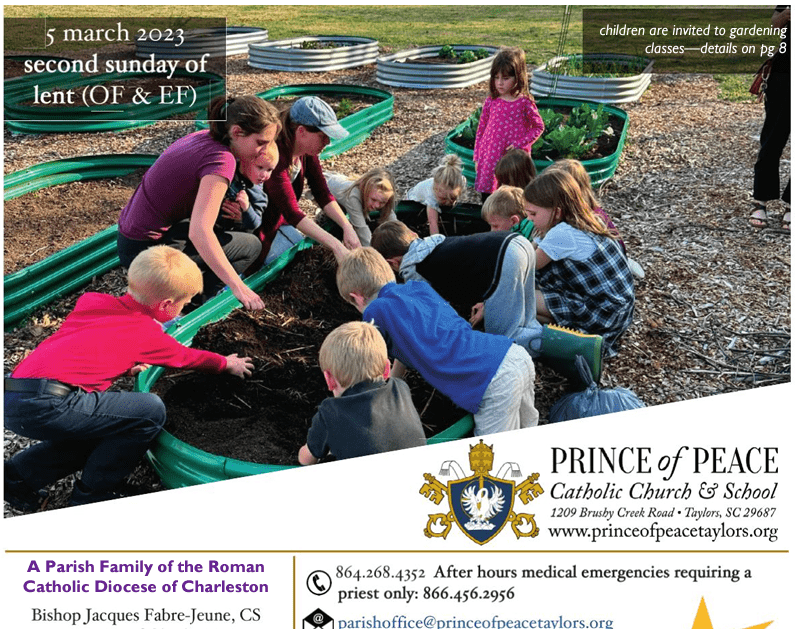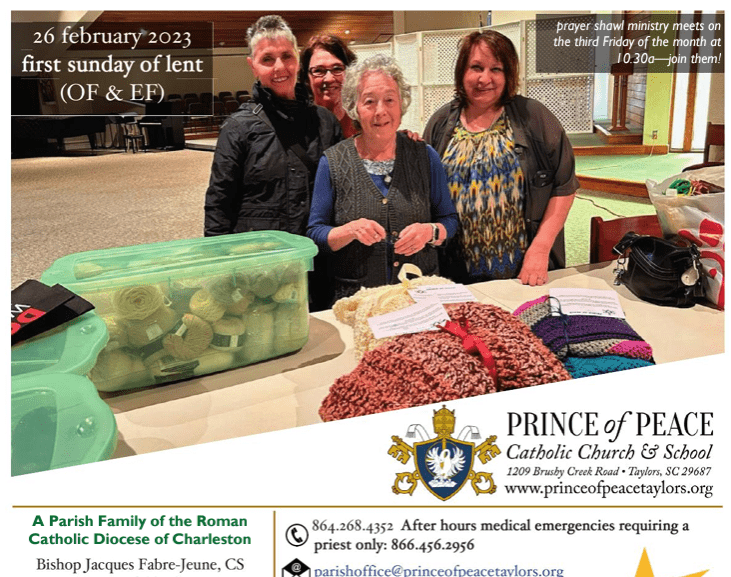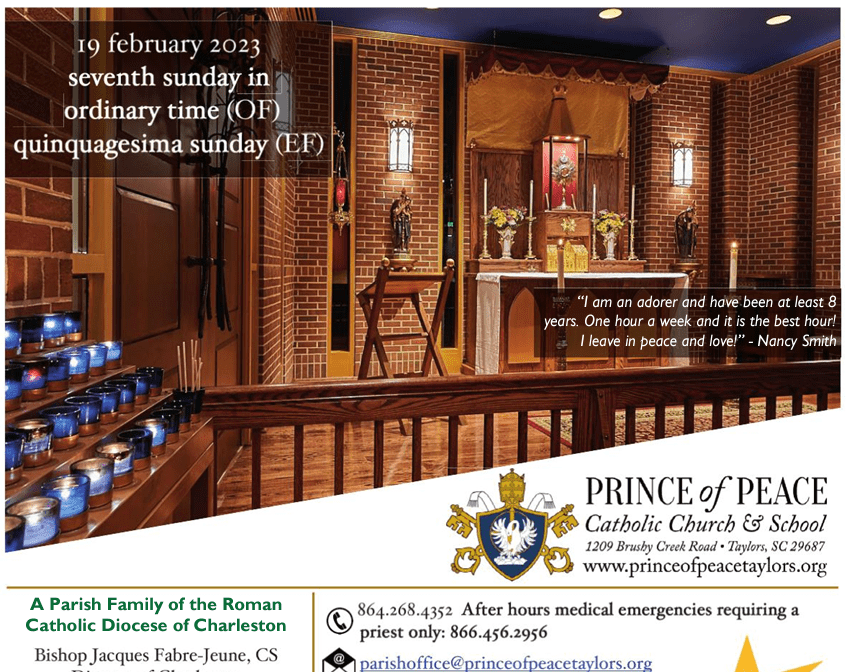
5 March 2023 Bulletin
Click to read this week’s bulletin: 5 March 2023 Bulletin

Click to read this week’s bulletin: 5 March 2023 Bulletin

Faithful Parishioners,
The St. Vincent DePaul Society has been a part of our parish ministry for over thirty years. I have personally seen the outpouring of support and generosity of the parish to keep this ministry funded and supplied, and it is a true testament to the giving heart we strive for here at Prince of Peace. As the new spiritual director for our local St. Vincent DePaul Chapter, I have begun to work more intimately with the leadership team that helps this ministry stay afloat.
These leaders and members, called Vincentians, are the life-force behind the good works that we have been able to do within the ministry. They dedicate themselves to the virtues of the St. Vincent DePaul Society, which are simplicity, humility, gentleness, selflessness, and zeal. This is most likely why the work that they do is so often unnoticed and unknown. Many of these members have been part of this ministry for decades and have committed so much of their time, talent, and treasure to the success of the ministry. But like the needs of our community, the needs of the ministry are also growing.
The call to servant leadership is an integral part of the Vincentian vocation. Leaders, often, can be perceived as needing to be outgoing or charismatic which we might find to be uncharacteristic of ourselves. But Vincentian servant leaders are not called to command or to rule; they are called to serve in the model given to us by Christ, who said he was among us not to be served, but to serve. As he so memorably washed the feet of the disciples who followed him, Vincentian servant leaders seek to fulfill the will of their fellow members, as friends and as servants.
As the spiritual director for this ministry, it is my responsibility to help aide in the spiritual growth and formation of the members and leaders. Through prayer, reflection and discussion—a cornerstone of a Vincentians calling—I have witnessed firsthand the virtues lived out within this ministry and have found great pride in being able to be a part of the organization. I have seen the commitment of these individuals to the success of the ministry.
Part of the success of St. Vincent DePaul is the development of new leaders who are ready to step up and graciously continue the good work that has been laid as foundation. Our local chapter is in great need of a President and Vice President candidate to take over this incredible ministry; these roles will inherit a dedicated and competent team of members and volunteers for a seamless transition. Our current President, Simone Imber, has led this chapter with compassion, commitment and care and is ready to help develop the next set of Vincentian leaders through a thorough mentorship process. We ask that you search yourselves to see if you are being called to be that model of service to your local community and prayerfully consider if the Lord is asking you to serve in this special way. If you feel you are ready to answer the call, please email Simone at imber.simone@gmail.com for more information. I look forward to serving with you in this ministry.
In Christ,
Dec. Michael Thompson

Click to read this week’s bulletin: 26 February 2023 Bulletin
**please note that Ordinary Splendor begins at 6.30p, not 7p as noted on the bulletin calendar

Click to read this week’s bulletin: 19 February 2023 Bulletin

Prince of Peace Catholic School in Taylors, SC, is accepting applications for full time elementary education teachers for the 2023 – 2024 school year.
Established in 2003, Prince of Peace Catholic School is a National Blue Ribbon, and Catholic Education Honor Roll School, with a history of academic excellence, currently serving 178 students in grades K4 through eight. Our school is the primary apostolate of Prince of Peace Parish, and is served by a team of experienced, dedicated, and talented lay teachers. Prince of Peace offers a wonderful work environment and a welcoming, familial atmosphere. To find out more about Prince of Peace Catholic School please view our school website at www.popcatholicschool.orgThe ideal candidate would be a practicing Catholic with a degree in elementary education or related field (advanced degree preferred) and experience with teaching in an academically rigorous setting. Compensation is competitive and commensurate with experience.
Please email a cover letter, resume, and references to Principal Steven Cunnningham at principal@
Recent Comments